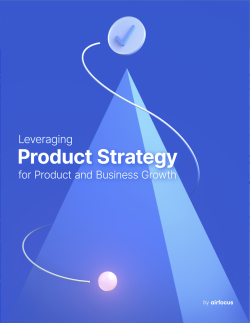Product-led Growth
What is product-led growth?
Product-led growth definition
Product-led growth (PLG) is a methodology in business that places focus on the products as a tool for growth. The product-led approach sees user acquisition, expansion, conversion, and retention primarily driven by the product.
Product-led growth requires traditional decision-makers to expand the decision-making process to include a larger range of stakeholders. While product-led growth can result in difficult and complex discussions, those discussions will reveal far more insights that can help influence better business decisions.
The product-led growth strategy explained
The product-led growth strategy is built around three integral pillars:
Design for the end user
Deliver value before capturing value
Invest in the product with go-to-market intent
These three pillars help to place focus on the right areas of development and can help build great products that offer maximum value to the customer.
The idea is that with great products that address real consumer needs, the business will naturally grow through word of mouth and positive experience reviews.
Let’s take a quick look at what each pillar means and the benefits involved.
Pillar 1: Design for the end user
A product-led growth strategy places the end user in the driver’s seat. Rather than relying on traditional metrics such as ROI, this process uses real people to judge the success of a product.
By switching the focus, products can be designed and built around solving real problems that real people are having right now.
Pillar 2: Deliver value before capturing value
Product-led growth teaches us that before you can gain value, you have to give value. If the people using your product aren’t gaining anything from their experience, your business is unlikely to feel any value when introducing a new product.
To avoid this, development teams need to build products that can immediately offer value to the end user. This can be done by solving their issues quickly or giving them enough information to realize the value the product presents in the early stages. This involves creating features and functionality that embody that value, while also removing things that distract from or create barriers to reaching the core value.
Pillar 3: Invest in the product with go-to-market intent
Product-led companies power their go-to-market strategy by investing in the product with the intent of driving acquisition, conversion, and expansion.
To do this, they will invest in robust product data that allows teams to track, measure, and analyze user behavior. They’ll also build out a growth function that’s responsible for ensuring the product enhances its own distribution, enablement, and ability to capture value.
Another key activity in the product-led approach is to run go-to-market experiments that lead to incremental improvements to the user journey.
Examples of product-led growth
Airtable
Airtable’s spreadsheet-database hybrid is found in professional workflows worldwide, but when the platform started out, it was mainly used as a way to organize personal projects. The substantial shift from a B2C to B2B was an intentional move, as the success at a customer level ensured the platform would be equally successful in the business world.
By using this trajectory, Airtable was able to establish itself as a comprehensive and helpful platform that was also easy enough to be used by anyone.
They were able to decrease the time to value that customers get when using the product for the first time, while also demonstrating the minimal time and behavioral change that it took to switch to Airtable.
Amazon and Facebook
Despite being the powerhouses they are now, Amazon and Facebook struggled to turn a profit in their early years — despite the massive number of users. While this caused analysts to snicker and deem both companies as failures, they were actually playing the sustainable growth game using a product-led approach.
Both platforms focused solely on the value they could offer to the user until they were integral parts of the user’s life. Only when users realized — en mass — the value Amazon and Facebook offered them did the companies start looking to monetize their platforms, growing them into the giants they are today.
General FAQ

Glossary categories
Create effective product strategy

Experience the new way of doing product management








